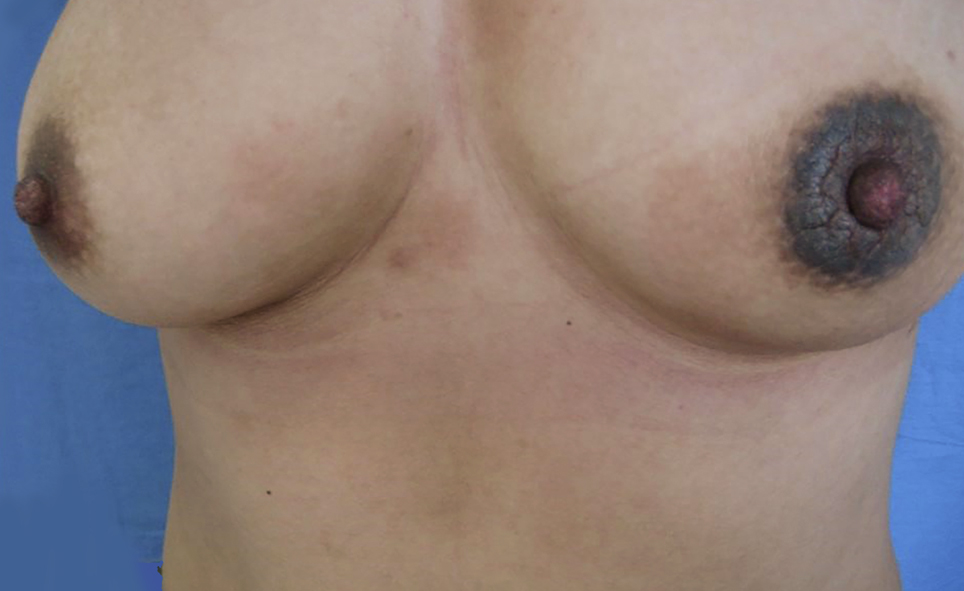A case of unilateral nevoid hyperkeratosis of the nipple and areola.

Downloads
DOI:
https://doi.org/10.26326/2281-9649.31.1.2215How to Cite
Abstract
Discussion. In 1923, Tauber first described hyperkeratosis of the nipple and areola, which was characterized by a slowly growing thickening and pigmentation of the nipple and areola (5). In 1938, Levy-Frankel further classified the condition into three types: (i) nevoid form (NHNA) or idiopathic type; (ii) in conjunction with other skin disorders; (iii) extension of an epidermal nevus (2). Considering this classification, our patient has the nevoid form or idiopathic type of hyperkeratosis. This type is usually bilateral, presenting as persistent verrucous thickening and dark pigmentation in the involved areas (6). The lesions are generally asymptomatic but are occasionally itchy. The etiology of NHNA is not known. Realizing that this condition usually occurs in females in their second and third decades of life, it was speculated that the occurrence of NHNA is related to sharp hormonal changes as menarche or pregnancy (3).
The diagnosis of NHNA is always by exclusion and needs confirmation by histologic examination. The specific pathological features include hyperkeratosis, acanthosis and papillomatosis and mild perivascular lymphocytic infiltrates, occasionally with keratotic plugging (4). Our patient refused our request for a biopsy and the diagnosis of unilateral NHNA was based on the clinical features. Despite being a benign disease, NHNA is distressing for patients, since the thickened skin shows an esthetically disturbing appearance. For clinicians it is therapeutically challenging, because there is no effective treatment for this condition. Mismanagement may threaten breast function or could lead to a bad esthetic result. Various modalities have been tried, but the results varied widely. Topical application of corticosteroids, tretinoin, keratolytics, calcipotriol and etretinate have been reported. Some Authors described treatment with radiofrequency, surgery and shave excision (1).
